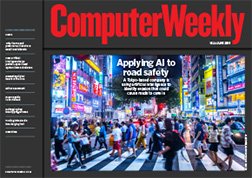CW+ Premium Content/Computer Weekly
Access your Pro+ Content below.
How artificial intelligence helps protect Japan’s road system from subsidence

This article is part of the Computer Weekly issue of 18 June 2019
Beneath Japan’s vast, complex (and often downright puzzling) road network runs an equally vast network of sewage and water pipes. But with much of this underground infrastructure laid in the post-war economic boom now old and decaying – as well as being subject to frequent earthquakes – subsidence and sinkholes on the surface are becoming a major source of disruption. In 2015, according to Japan’s ministry of land, infrastructure, transport and tourism, road subsidence was identified at 3,300 locations around the country. In November 2016, to give just one example, a sinkhole that opened up in Fukuoka on the southern island of Kyushu blocked a major city centre intersection for days. Water from deteriorating pipes flowing into subway tunnels beneath the road was held to be the cause of the Fukuoka street collapse, and it is possible, indeed likely, that loss of life was averted only because it happened at 5.15am. But now new deep learning and artificial intelligence (AI) techniques are being applied to data generated by ...
Features in this issue
-
How AI helps protect Japan’s road system from subsidence
Tokyo-based Kawasaki Geological Engineering is using Fujitsu’s Zinrai artificial intelligence system to develop a solution to erosion causing subsidence and sinkholes on Japan’s road network
-
Debugging bug bounty programmes
Bug bounty programmes have recently become a popular method of vulnerability management, but poor programme management can lead to development teams becoming overwhelmed and bugs being missed



